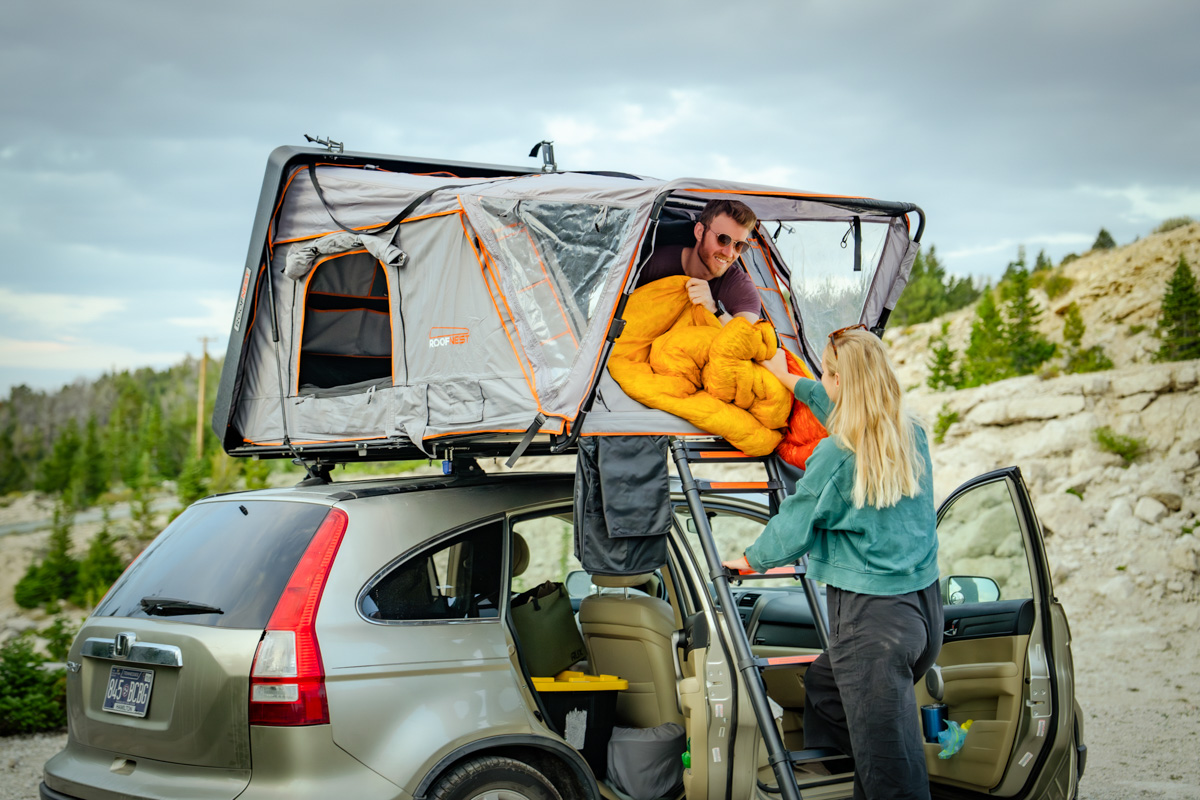
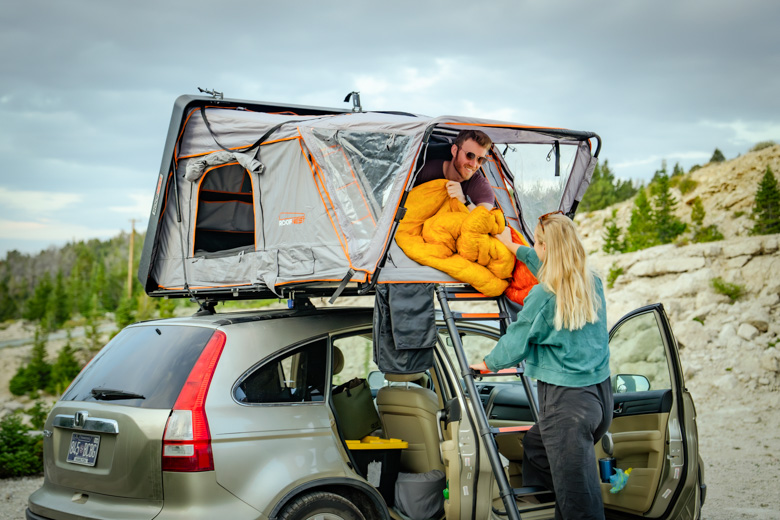
Switchback Travel (Jason Hummel)
Price: $3,745
Category: Hardshell
Floor area: 29.8 sq. ft.
Peak height: 40 in.
Capacities: 2+, 3+
What we like: The spaciousness of a softshell tent with the durability and quick setup of a hardshell.
What we don’t: Setup isn't as streamlined as other models; we had some water pool in areas during rain.
See the Roofnest Condor 2 Rooftop Tent
I’ll be honest—rooftop tents always seemed a little overhyped to me. Why sleep on top of your car when a perfectly good ground tent does the trick (or even the back seat)? But after spending over two months living out of the Roofnest Condor 2 on a 6,000-mile road trip across the U.S. with my partner, I get it now. This thing completely transformed our camping experience. Whether we were dodging thunderstorms in Glacier, braving wind gusts near the Bonneville Salt Flats, or pulling off late to sleep at a desert overlook, the tent proved itself over and over again. It kept us dry through wild weather, is easy to deploy, and became a cozy, elevated refuge after long days on the road. Below I dig into our experience with this incredibly livable rooftop tent—and why I’d take it on another trip in a heartbeat. To see how the Condor 2 stacks up to the competition, check out our article on the best rooftop tents.
Editor's note: We tested the previous iteration of the Condor 2 on our road trip before it was updated to the Condor 2 "Air". We predict that performance will be largely similar between the two models, but there are a few key differences, including sleek new styling, improved awnings, a drop in weight by 10 pounds, and a new "Rest EZ Sleep System" with sheets and a blanket. We will be sure to update our review once we get a chance to test the latest model.
One of the first things that struck me when we crawled into the Roofnest Condor 2 that first night was just how roomy it felt. Rooftop tents can quickly feel cramped, but this one defied expectations. With 29.8 square feet of floor space, there was more than enough room for two people and our medium-sized dog to sleep comfortably, with space left over for extra bedding and gear. I could sit up fully without brushing the ceiling, and we could both shift around or change clothes without constantly elbowing each other. After weeks on the road, that little bit of personal space made a big difference—it genuinely felt like a small, well-organized bedroom perched on top of our car. My partner is 6'1", and had some issues stretching fully out—especially when our dog would decide he wanted the entire bottom half of the tent. But, we figured out the best positioning for us both in the end and had little difficulty snoozing away soundly each night.
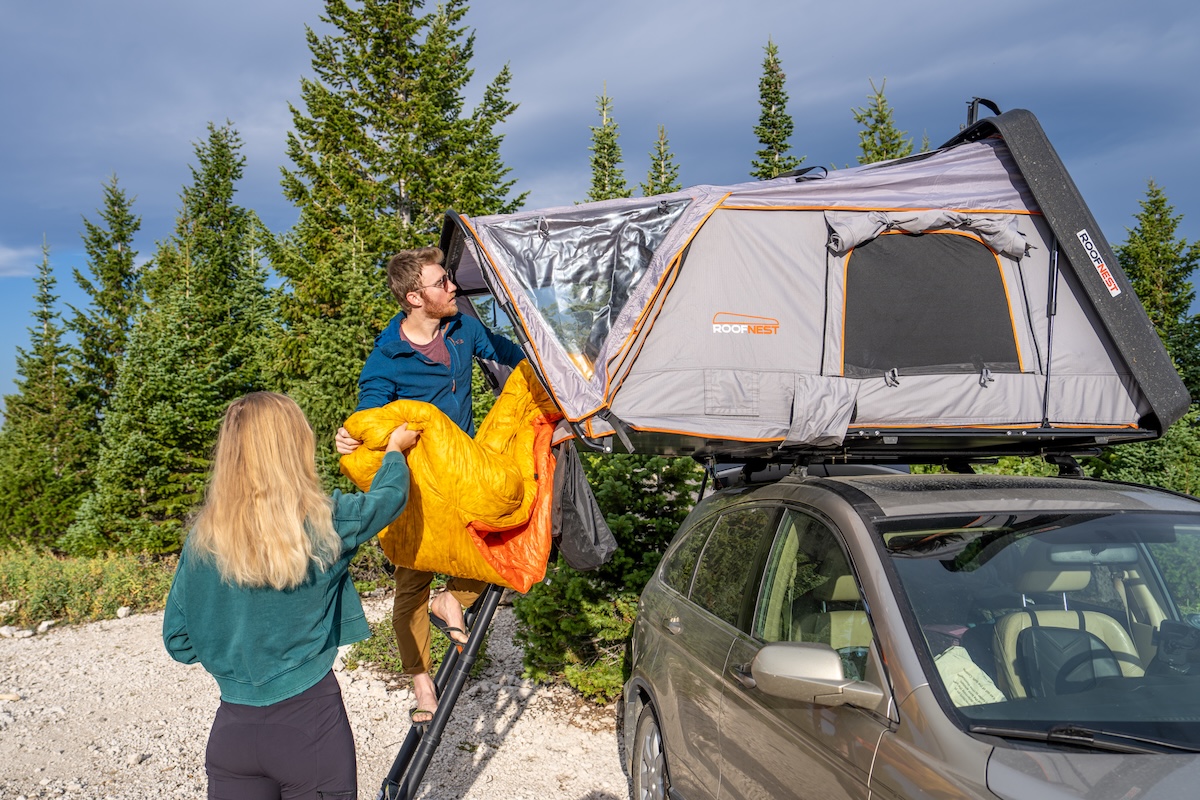
The Condor 2 comes with a built-in mattress, and to its credit, it’s more comfortable than it looks. For such a thin pad, it does a decent job smoothing out the platform below and provided a surprisingly decent night’s sleep during the first few stops of our trip. But as the miles added up, so did the sore backs. After a week or so, we realized we needed something more substantial and ended up buying a memory foam mattress topper, trimming it to fit the tent’s interior footprint. It made a huge difference in comfort, but admittedly added a bit of hassle to our daily routine—we had to roll the foam up each morning, stash it in the back of the car, and then wrestle it back into place each night. Not a dealbreaker, but definitely something to factor in. For short weekend trips, the included mattress might be fine, but if you’re planning a longer journey like ours, we’d highly recommend supplementing it with a foam pad or topper to make your nights a whole lot more restful. That said, the mattress has been upgraded in the most recent "Air" model to be a bit more comfortable, and even comes with blankets and sheets. We've yet to test this new "Rest EZ Sleep System," but will be sure to update our review once we do.
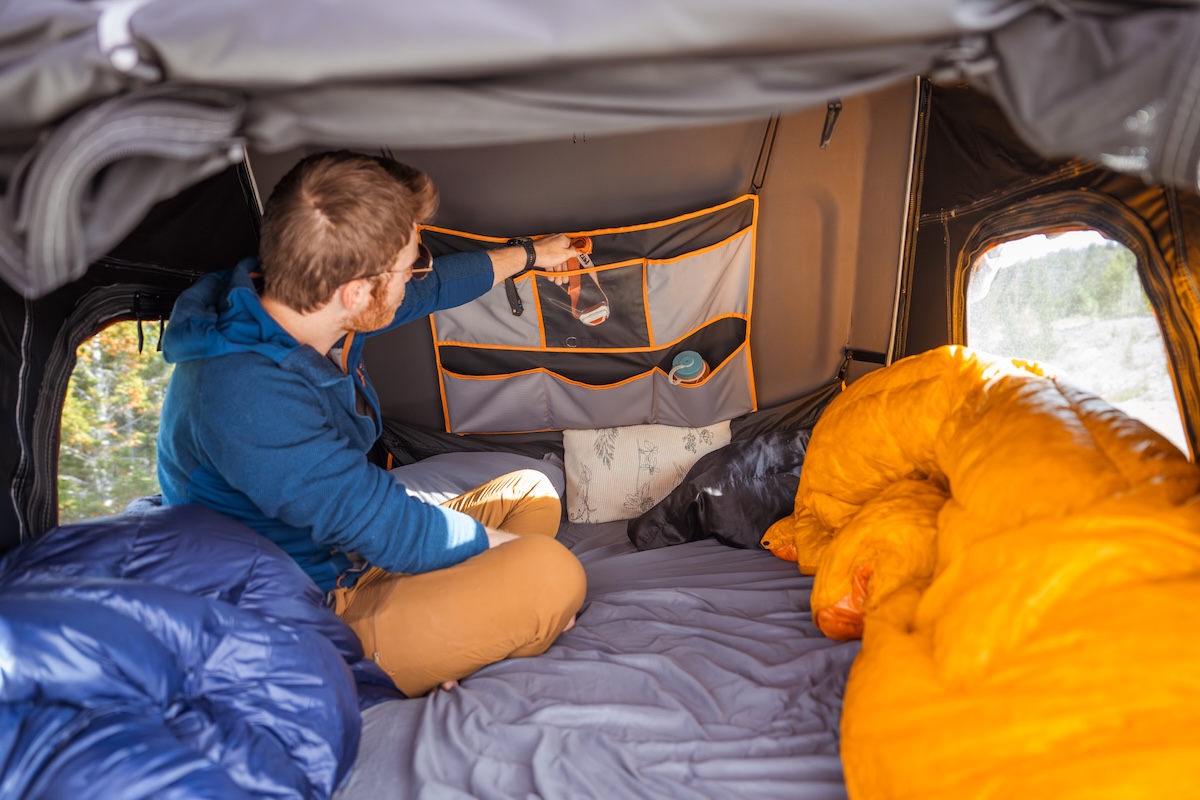
The shell of the Condor 2 is built like a tank. It features a ruggedized LINE-X-coated ABS exterior with an internal aluminum frame, which adds a noticeable amount of structural support while keeping weight and bulk low. We were consistently impressed by how it held up—not just to the bumps and scrapes of off-road travel, but also to the wind on the open road. The shell was surprisingly aerodynamic: It didn’t catch gusts or buffet the car like some other models we’ve heard of, and there was zero wind noise at highway speeds. That kind of performance is rare, and speaks volumes about the thoughtful design and build quality.
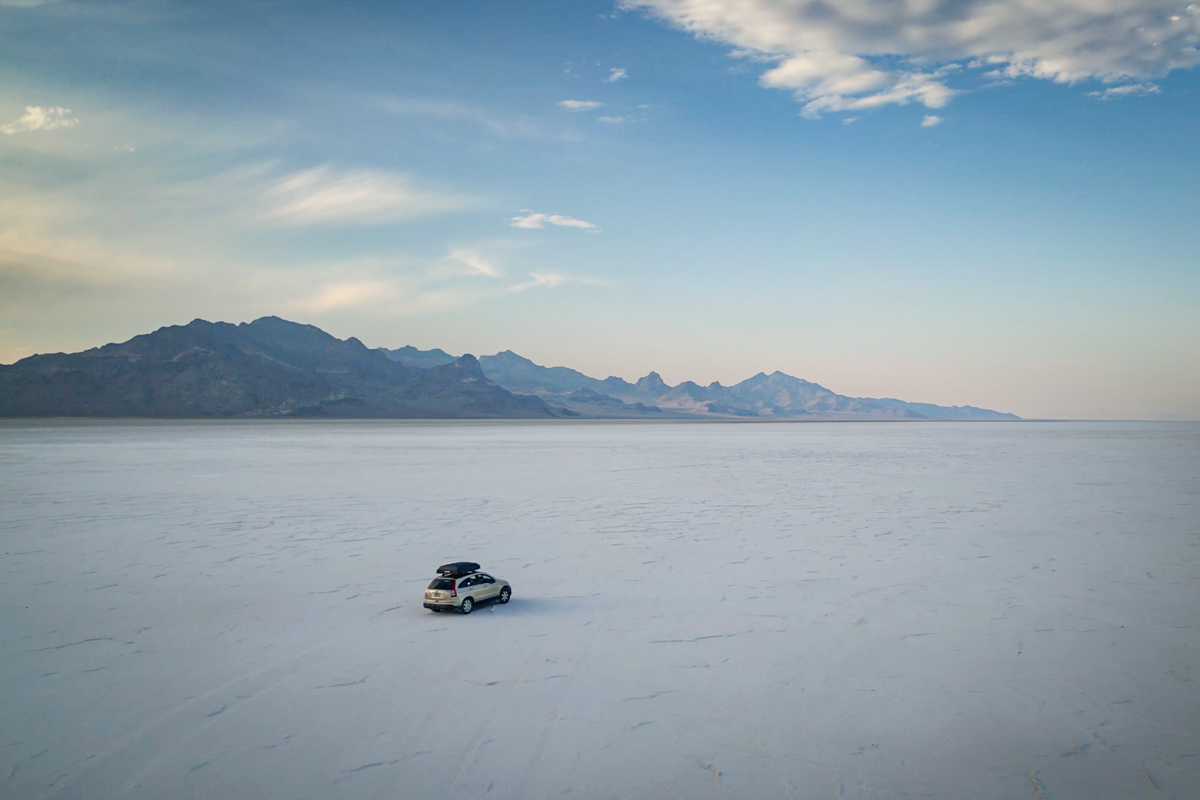
The tent body itself is made from a 280 GSM poly-cotton canvas with a blackout coating, paired with a rainfly made of coated Polyoxford (rated to 3000mm waterproofness). This material setup felt burly and confidence-inspiring from the get-go, and it stood up to some wild weather on our trip—including heavy downpours in the PNW, sustained wind gusts in Wyoming, and even a mild dust storm in Utah. That said, we did run into one hiccup: A bracket that holds some internal pockets within the tent broke during our first week on the road and ended up puncturing a small hole in the tent fabric (and roughing up the back of the shell—see detail photos below). Luckily, the hole was under the rainfly and didn’t affect water resistance, but it was a bit alarming to see something fail that early on. To be fair, it very well could have been our fault by overpacking the included zippered "duffel" in the tent, but we had read that you should be able to fill it out fully without compromising the integrity of anything within the tent. Outside of that, though, the tent’s fabric held strong, and we didn’t experience any further tears or signs of wear over thousands of miles.

We put the Condor 2 through the wringer—navigating tight forest roads, ducking under low-hanging branches, and parking in exposed, wind-ravaged campsites—and the shell took it all in stride. We heard the occasional scrape and scuff as tree limbs brushed against the sides, but the LINE-X coating did its job and shrugged it off without compromising the structure. For such a mobile setup, it felt impressively robust. All told, I walked away thoroughly impressed with the tent's durability. Whether you’re bouncing down backroads or racking up serious highway miles, this rooftop tent can take a beating and keep on ticking.
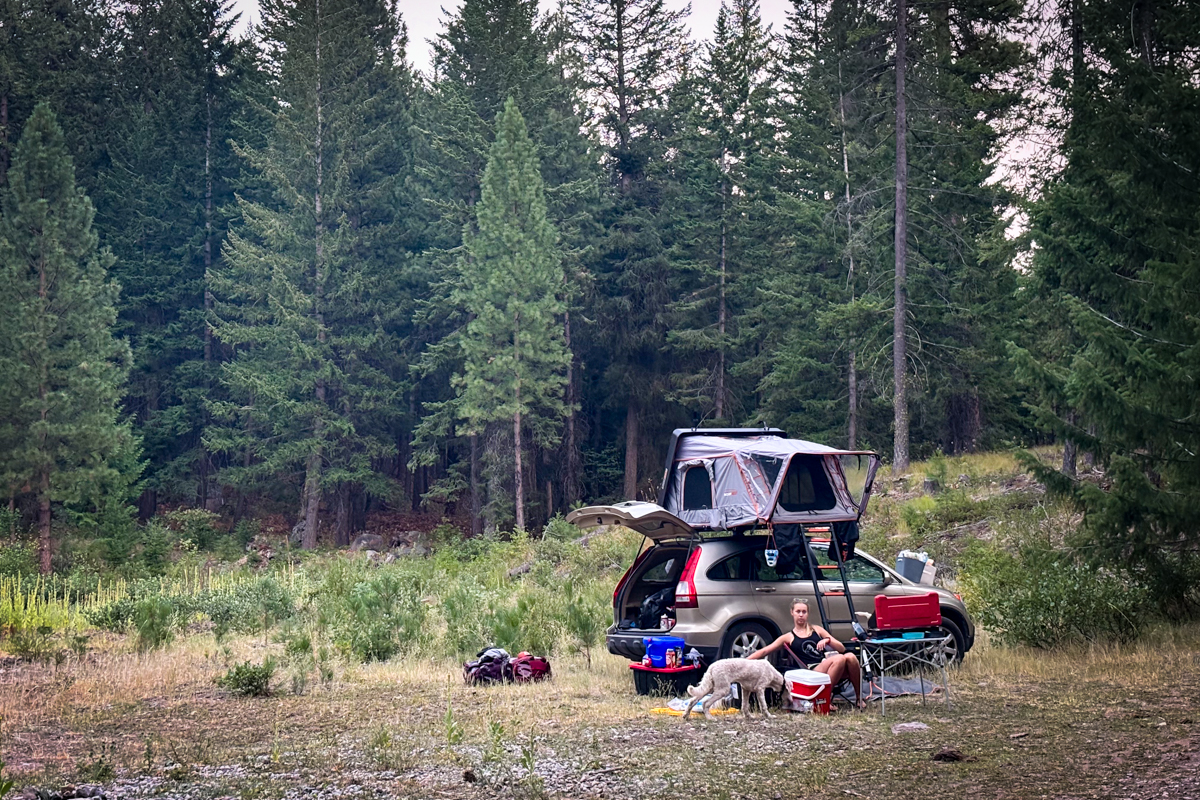
The Condor 2 offers a couple of clever features in the ventilation department—most notably, two HVAC ports built into the side of the tent, which are designed to accommodate a small heater or A/C unit/fan. These vents can easily be covered up by a velcro flap in hard rain. If you can find a fan that fits snugly into these openings, it can do a decent job of circulating air, especially when paired with open windows. That said, the ventilation leaves a bit to be desired. The mesh on the windows is quite thick and doesn’t allow as much airflow as we’d hoped, particularly on warmer, stuffy nights deep in the woods. For a lot of our road trip, we ended up rigging three different fans around the tent just to stay cool, with string, cables, and carabiners crisscrossing all over the place. It wasn’t ideal, and while the tent is wonderfully sealed from the elements, that tight seal also makes it tough for air to move freely without a mechanical boost. That said, if you know it will be a fair-weather night you can open up the fly and transparent plastic flap above you and significantly boost the cross-breeze.
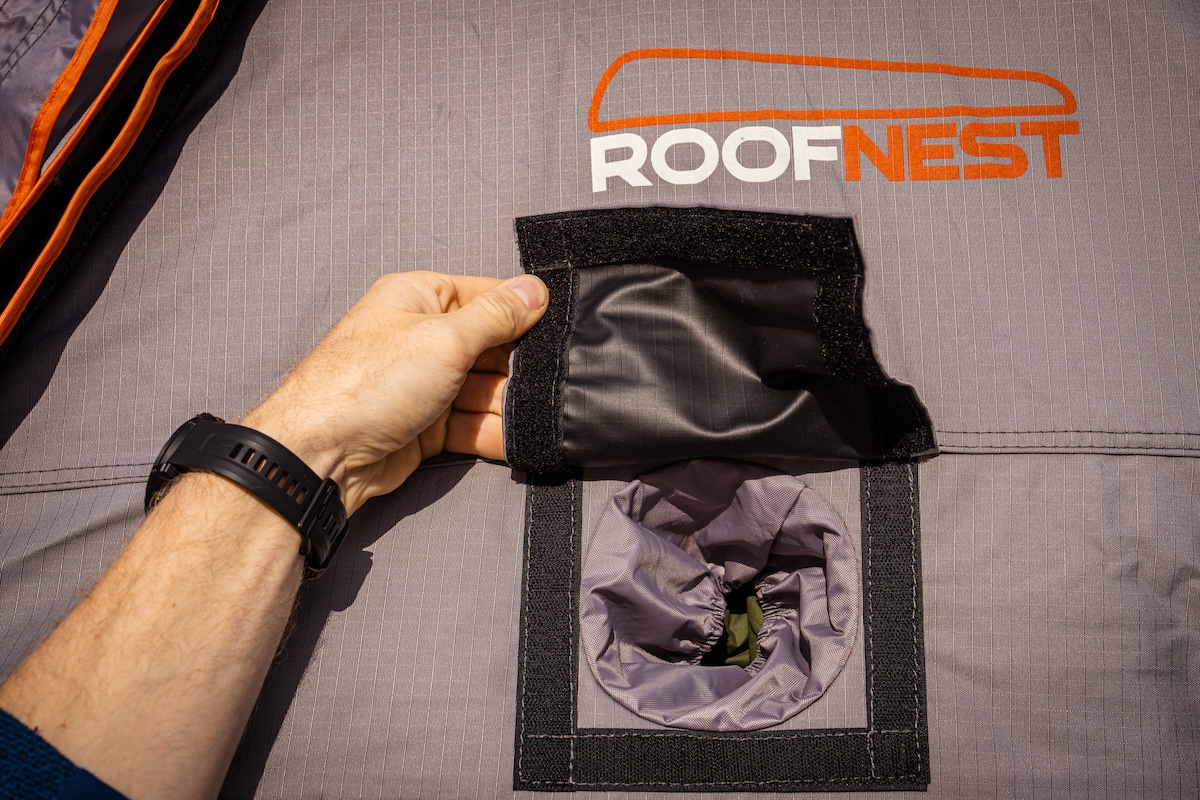
On the flip side, that weatherproof nature makes for excellent rain protection. We put the Condor 2 through a gauntlet of driving wind, heavy rain, and even a brief sandstorm in the desert, and it never once let us down. Not a drop made it inside during multiple overnight downpours, and the structure remained rock solid even as gusts shook the surrounding trees. The blackout-coated canvas and Polyoxford rainfly really shined here, offering a true four-season level of protection. The rain fly can easily be zipped out of the way to open up the roof to the elements so you can stargaze as you drift to sleep, with the option of a mesh or transparent plastic flap overhead. The only quirk we noticed was a small spot on the rainfly, right before the support bar on the downward slope, where water tended to pool during sustained rain. This wasn't a dealbreaker, but that little sag collects quite a bit of water and sits directly above the main door. More than once, we accidentally splashed ourselves when exiting the tent in the morning. A minor gripe, but something to be aware of if you’re camping in wet conditions.
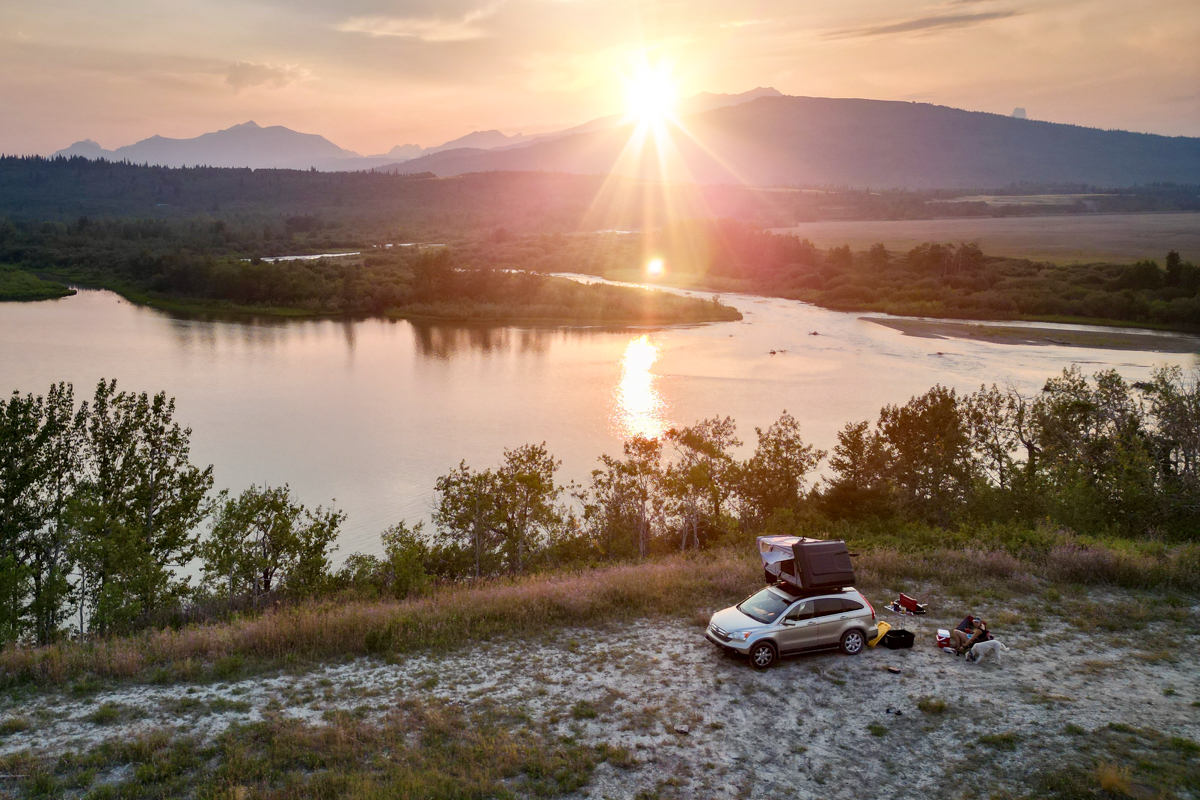
I have mixed feelings about this element of the Condor 2. In one sense, it's incredibly quick and easy compared to other rooftop tents we've played around with. On the other hand, there are a few pain points that we never quite got over during our trip—which could very well boil down to us just not understanding the system. In theory, the tent deploys quite easily after you unlatch the case, smoothly popping up with hydraulic struts that keep the tent open. A long grab handle extends down from the roof allowing you to control the rate at which it opens (see photo below). A thin elastic band wraps around the sides of the tent (also seen in the photo below), ostensibly to tuck the fabric in when closing the tent, but we didn't find it to be very effective. You have to remember to pull this cord down and out of the way before fully opening the tent, otherwise it slides up and out of reach as seen. After the lid is open, you slide a telescoping ladder out from inside the tent and unfold the other half of the floor. This is easy to do, but we kept running into the same issue over and over again.
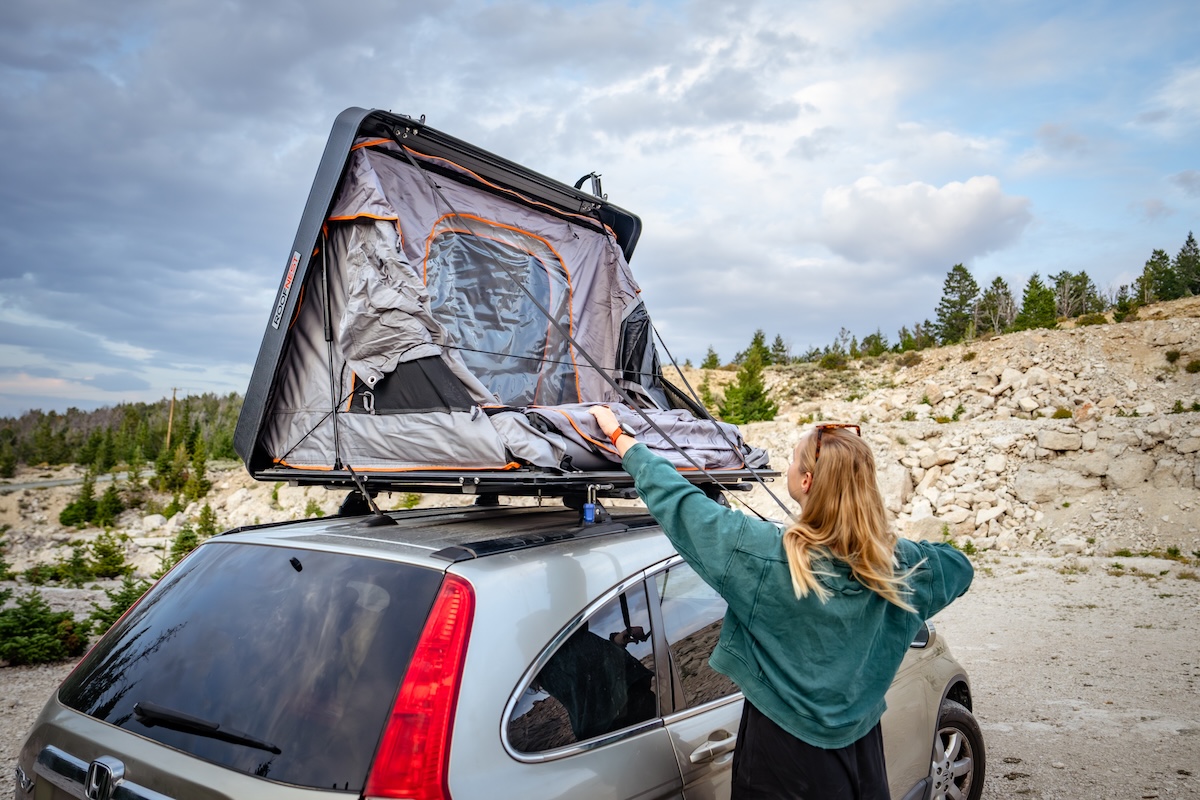
For some reason, the rear-facing aspect of the tent kept getting caught on itself as we would unfold the tent (see photo below). This didn't happen to us at first but started after a few nights on the road, and we couldn't fix the problem for the rest of the trip. Each time we opened it, one of us had to stand on the back tire of the car and reach up awkwardly to free the corner that got trapped in the fabric so the tent could lie flat. We tried to adjust everything we could think of to prevent this from happening to no avail. I'm sure there is something we're missing here, and some strap that should be loosened a bit somewhere, but we really just couldn't figure it out. I reached out to Roofnest to inquire about this, and they mentioned that this is an issue several customers reported on models from a certain production run. They found that the tent material was sewn too tightly on some units, which caused the tent body to catch on the U-bar when opening. They corrected this with the factory, and all future production runs were without issue (including the latest “Air” models). If your Condor 2 has this issue, Roofnest has some corrected, replacement tent bodies from the factory that they can supply to customers who reach out, which can then be swapped out to correct the issue.
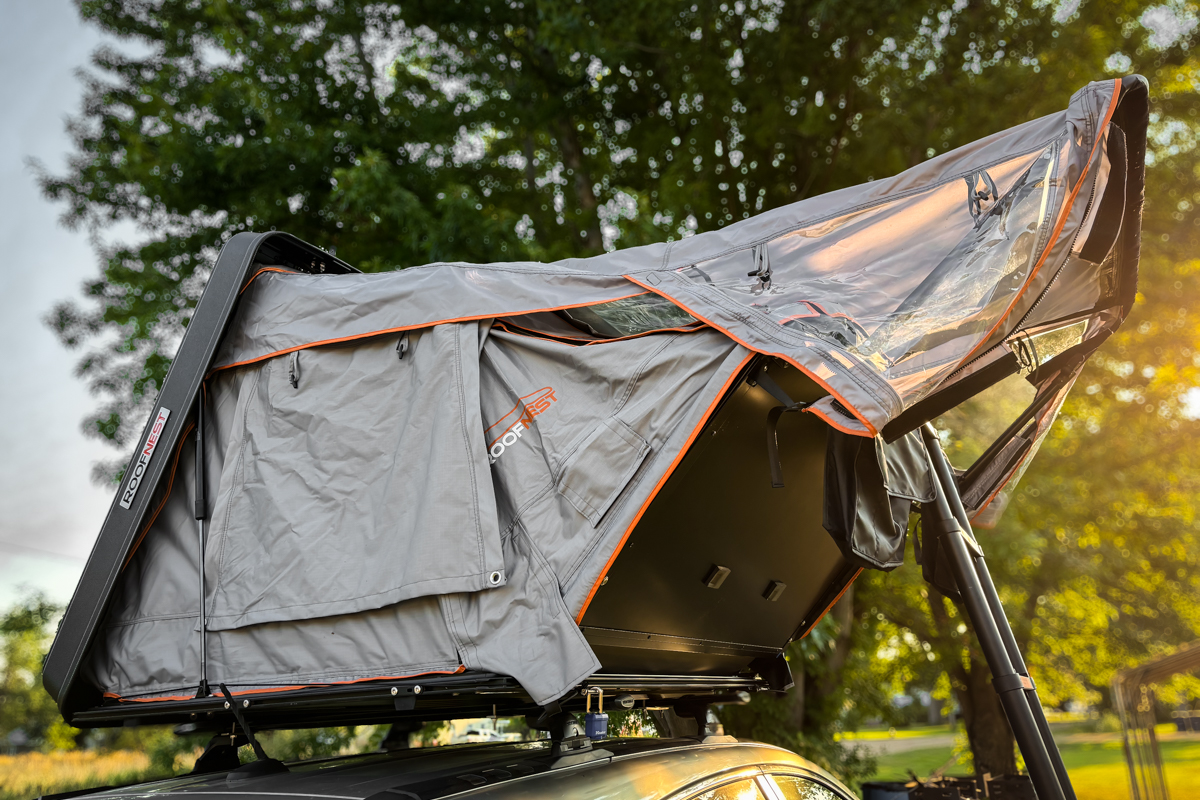
We also had a few frustrations surface when collapsing the tent. About 30% of the time, the fabric would fold in on itself perfectly, the elastic band would hold things out of the way, and the lid would fully close without a hitch. The majority of the time, however, we each had to hop up on the front and back tires to shove folds of fabric into the case as we closed it, which took a few coordinated ninja moves on certain occasions. Once you get the lid to a certain point, the struts hold it down in place, but if you release the pull strap too early, it can quickly pop back open. And, speaking of the pull strap, there were a few times it wormed its way out of the box while on the road (photo below) and began flapping wildly in the wind until we could pull over and shove it back in place.
Since you use the pull cord to collapse the lid, you have to kind of shove it in at the last second, and it's tricky to trap it under enough of the tent so that it doesn't squirm its way out down the road. All told, while I think there are a few opportunities for improvement in the setup and takedown process, I still think the design is intuitive—and when it works, it works very smoothly. There are a lot of moving parts with rooftop tents, and it's tricky to make something with so many components operate seamlessly. I think Roofnest did a pretty stellar job considering the comparatively complicated silhouette of the Condor 2.
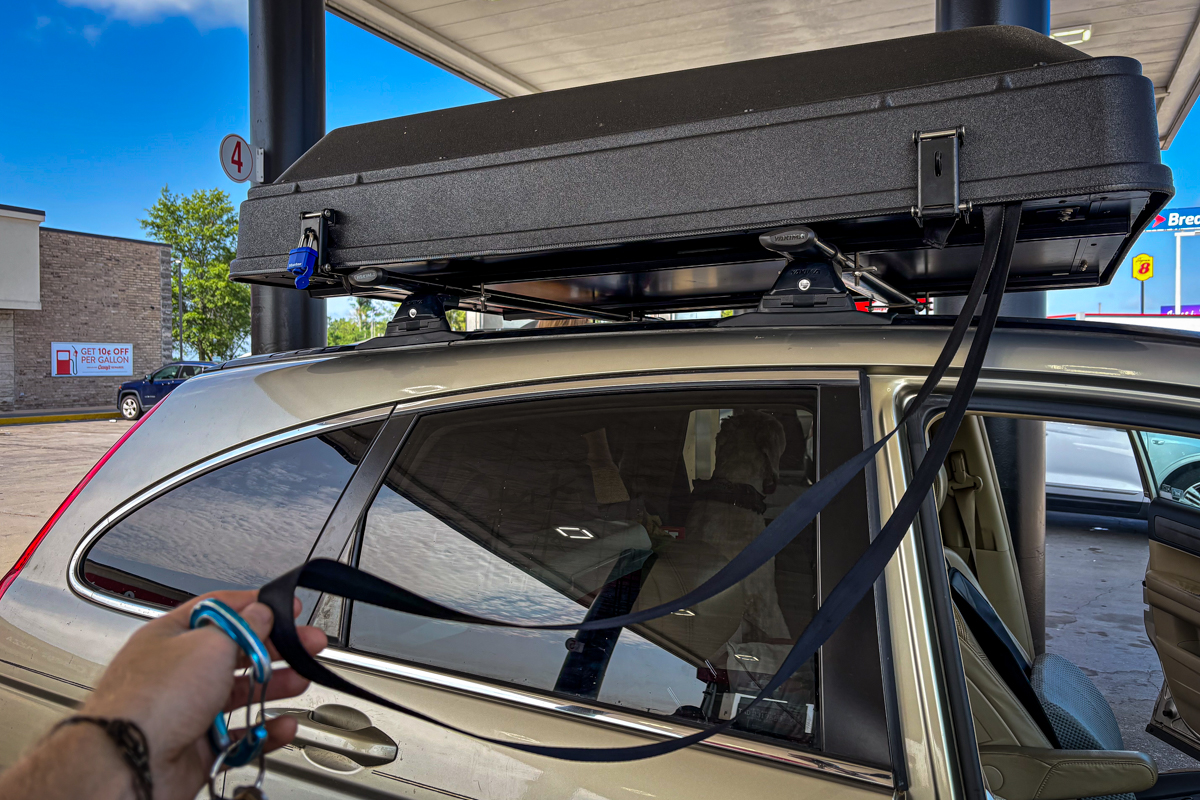
One of my favorite features on the Condor 2 is its trio of awnings—a large one over the main door and two smaller versions above the side windows. These little overhangs might seem like minor additions, but they make a big difference during stormy weather if you want to keep a cross-breeze going. In several heavy downpours, the awnings did a stellar job of deflecting rain away from both the door and windows, letting us keep things cracked for airflow without worrying about water sneaking in. I also appreciate that you can zip the window awnings down flat against the body of the tent, which proved especially useful in sideways rain and strong winds. That said, there was a bit of a learning curve when it came to setting up the support rods for the side window awnings. The process wasn’t as intuitive as I’d hoped, and it took us a few tries (and some trial and error) to find a configuration that held securely and didn’t put unnecessary stress on the fabric. Once dialed, though, the awnings added a lot of versatility and storm protection. While we appreciate the generous awning at the door, I wish that you could zip the side flaps onto the tent itself to keep out particularly gnarly rain or high wind.
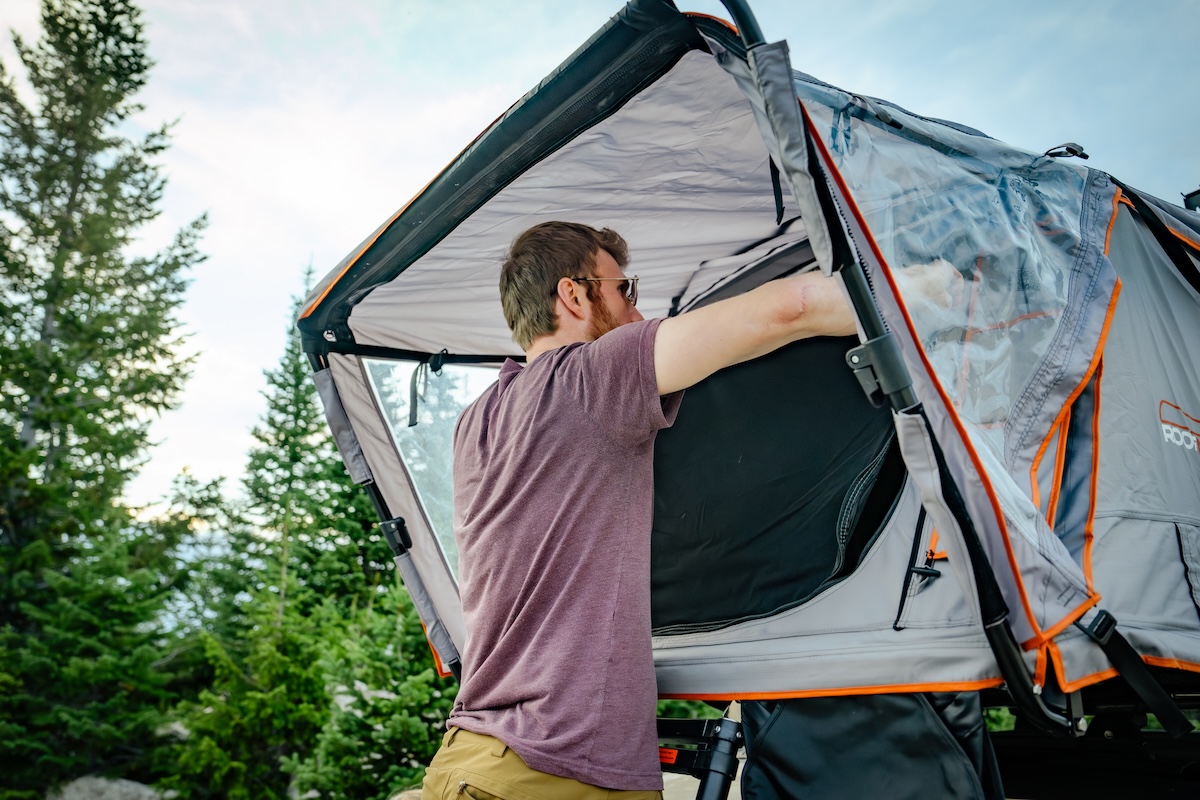
One of the things I appreciated most about living out of the Condor 2 for the summer is how thoughtfully the interior is laid out. The three USB-powered, dimmable LED light bars (two inside, one outside) make a big difference when the sun dips—just plug them into a power bank and you’ve got a cozy, well-lit space without blinding yourself. At the back of the tent, there’s a handy six-pocket gear grid held up by elastic where we stashed everything from headlamps and books to toiletries and snacks. The four-way windows offer a good bit of flexibility for airflow and views (even if we had to supplement with fans on hot nights), and the included interior duffle made it easy to keep our bedding or sleeping bags inside the tent during travel. Rounding things out are two detachable gear pockets that hang down on either side of the ladder—perfect for shoes or other dirty gear you don’t want inside. For a relatively compact space, the Condor 2 packs in a surprising amount of livability.
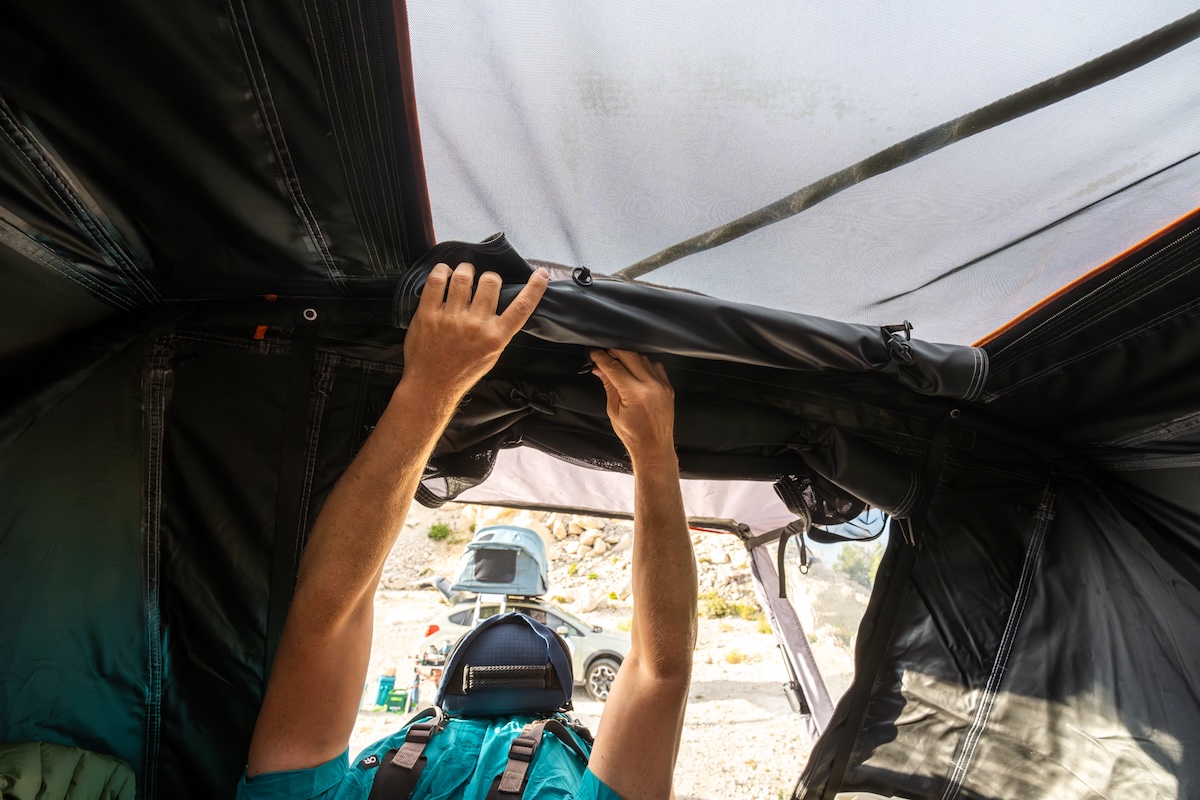
Installing the Condor 2 was a cinch. The tent came with clear instructions, and there are plenty of tutorial videos on good ol' YouTube University to guide you along the way. The most important part is ensuring you have the appropriate roof rack or cross bars that can support the weight of the tent (ours was 155 lbs—the latest "Air" iteration drops 10 pounds from this) and two people. Keep in mind that roof racks are rated for dynamic loads—that is, the weight they can handle while you’re driving, especially during sudden stops or high speeds. But when your vehicle is parked, the static load capacity is much higher, often up to seven times the dynamic rating. So as long as your rack is properly installed and rated to support the weight of your rooftop tent alone, it’ll have no trouble holding you (and a partner or two) while the tent is in use at camp. I mounted my tent on the Yakima Skyline System rack on my Honda CRV. The tent itself easily installs onto crossbars with metal brackets. It's important to note, however, that the tent weighs well over 100 pounds and takes several people to safely hoist onto your rack and secure in place.
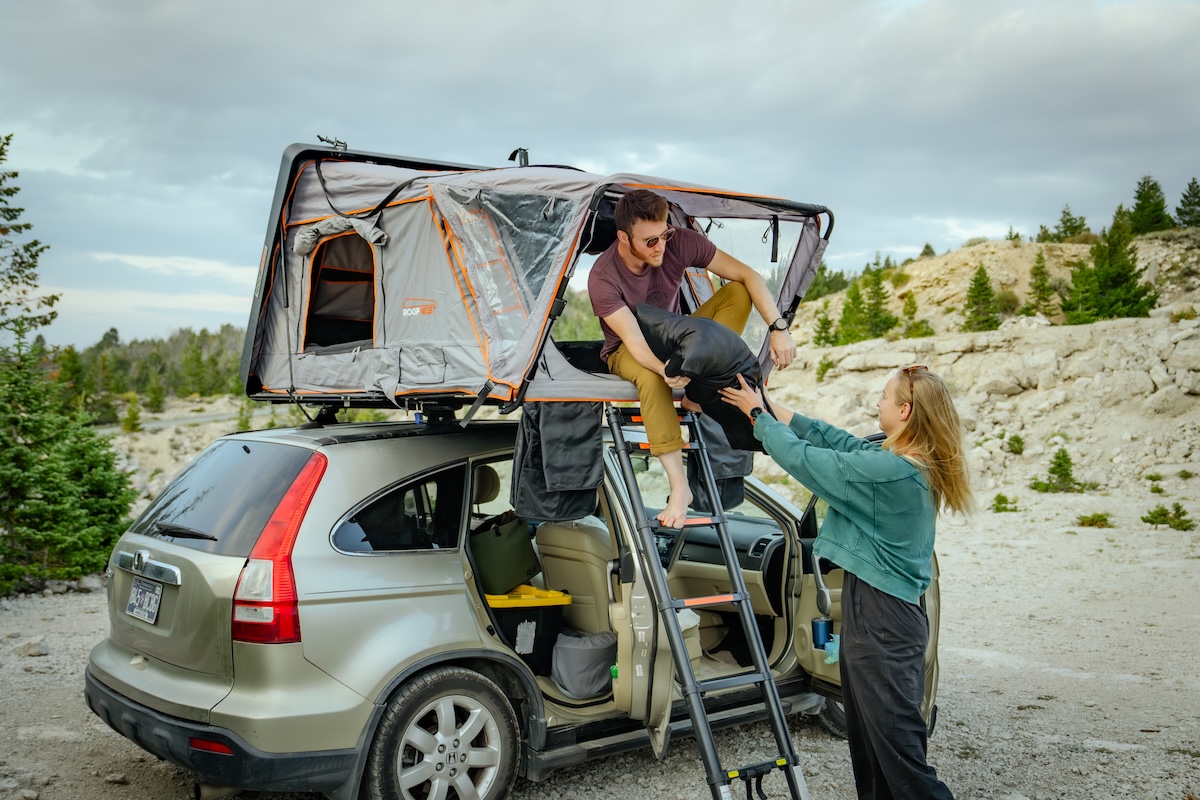

| Rooftop Tent | Price | Category | Floor | Peak Height | Weight | Capacities | Shell Materials |
|---|---|---|---|---|---|---|---|
| Roofnest Condor 2 Air | $3,745 | Hardshell | 29.8 sq. ft. | 40 in. | 145 lb. | 2+, 3+ | ASA/ABS plastic |
| Thule Approach Medium | $2,500 | Softshell | 33.6 sq. ft. | 40.2 in. | 128 lb. | 2, 2+, 3+ | Softshell |
| Smittybilt Overlander | $1,229 | Softshell | 36.9 sq. ft. | 51 in. | 117 lb. | 2+, 3+ | Softshell |
| Roofnest Meadowlark | $1,595 | Softshell | 23.9 sq. ft. | 36 in. | 90 lb. | 2 | Softshell |
| Roofnest Falcon 3 Evo Air | $3,495 | Hardshell | 26.1 sq. ft. | 58 in. | 130 lb. | 2 | ABS/Aluminum |
The rooftop tent market has exploded over the last decade, with countless different options for various adventures. Your biggest consideration when comparing brands and models will probably boil down to capacity, price, and hardshell vs. softshell. The latter is a key consideration, as each offers its own benefits. Softshell rooftop tents are a popular choice for first-timers thanks to their lower price point (typically $1,000–$2,500), larger floor plans, and compatibility with add-ons like annexes and awnings. They fold out beyond your roof, set up with poles and hinges, and are covered with a durable soft shell. However, compared to hardshell models, they have some notable drawbacks: they’re more prone to moisture buildup and mold, are noisier in windy conditions, and take considerably more time to set up and take down. Our favorite softshell rival to the Condor 2 is Thule's Approach, but if you're road-tripping on a budget, we've also had great luck with Smittybilt's budget-friendly Overlander—a worthy softshell pick for under half the cost of the Condor 2, and our current "best budget" pick in our comprehensive round-up. That said, if you can spend up a bit and have a small car, we are also big fans of the Roofnest Meadowlark. It's smaller all around, but also considerably lighter at just 90 pounds.
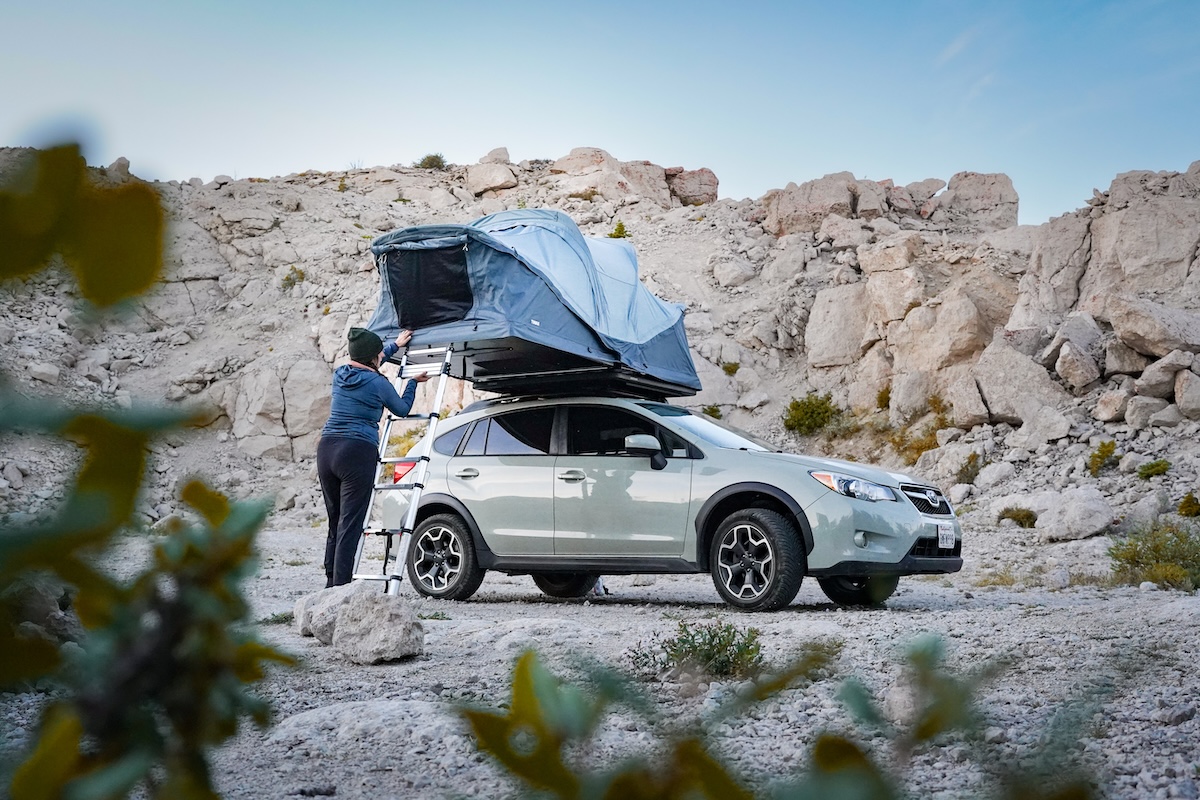
Hardshell rooftop tents trade the soft covering for a sturdy fiberglass, plastic, or aluminum shell, often opening via a hinge or popping up on all sides. While more expensive and heavier than softshells—and typically offering smaller floorplans—they boast a longer lifespan, faster and easier setup (often under a minute), and far better protection from the elements, wind, and road debris. Many are fully waterproof and more aerodynamic in transit, with some models (like the Condor 2) even allowing storage of bedding inside or the addition of crossbars for bikes and skis. For frequent movers and those seeking convenience and durability, hardshells are often worth the investment. A stellar hardshell alternative to the Condor 2 is Roofnest's own Falcon 3 Evo Air. In the end, it's best to do your research and consider the type of conditions you plan to camp in before making such a committing purchase. Whatever you go with, however, rooftop tents offer a unique backcountry experience that's downright difficult to beat.
Back to the Roofnest Condor 2 Review See Our Rooftop Tent Guide